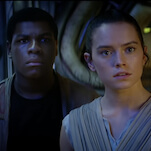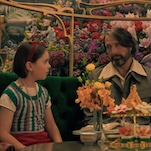In memoir, likeability helps, and Chicago bluesman Buddy Guy is an easy guy to like. His music is heavy on hurt and heartbreak, but his attitude is positive without seeming strained. When I Left Home: My Story, Guy’s collaboration with star ghostwriter David Ritz, goes vague at times: Guy’s 1991 album Damn Right, I’ve Got The Blues, the first big hit of his career, is waved at, but little more, and the most he says about his two divorces is that he regrets the way the marriages turned out. But the book showcases Guy as a charming raconteur who isn’t shy about detailing his blues heroes’ darker sides, as in the ugly story of harmonica player Little Walter punching his wife and her mother at a club after blinding them with salt and pepper.
Guy has worked hard all his life. He grew up in a Louisiana sharecropping family; electricity arrived in his home when he was 12, and Guy promptly fell under the hypnotic sway of John Lee Hooker’s “Boogie Chillen’.” A guitar-playing family friend named Coot showed him a few tricks; so did an early appearance at a nearby store by Lightnin’ Slim, from whom Guy freely adapted his own showboating stage style. Slim also offered the young teenager this advice: “Boy, everybody can sing, just like everybody can talk.”
Going up to Chicago at 21 with $600 in his pocket, Guy made a fast impression. Muddy Waters took him under his wing (“I know you had to be pickin’ cotton before you ever picked a guitar,” he tells Guy; “You pick cotton long enough and you never complain ’bout having to pick the guitar”), and the youngster began playing on sessions for local blues giant Chess Records. (Guy disputes the long-held story that Waters was working as a handyman during The Rolling Stones’ first session there in 1964.)
In the ’60s, Guy began performing with hard-drinking harmonica-playing singer Junior Wells, who once fired a drummer “for disturbing me while I’m drinking” (his non-playing manager was forced to play drums while they searched for a replacement) and, in one of the book’s funniest stories, entered into a dick-measuring contest with fellow harpist Little Walter. Guy’s relationship with Wells was stormy: “Me and him was ham and eggs. But it didn’t take much for his eggs to get scrambled, burning up my ham and scorching the frying pan.” Guy stopped performing with Wells at the end of the ’70s.
Guy can laugh at—and get laughs from—his own past misfortune. His recording career was scattered; he openly disdains the 1972 album he and Wells made for Atlantic Records, and is magnanimous when he recounts how “The Same Thing,” a song Willie Dixon wrote for Guy, was reassigned to Waters by Leonard Chess: “Sure, my heart was hurting, but my heart was also happy that Muddy was getting good material. He did it beautifully, and I’d have to count it among his best records.” Guy later bought Muddy’s house and preserved it as an historic Chicago landmark.
But his vision of the blues has never wavered. Touring in the mid-’60s, right after The Rolling Stones and The Yardbirds brought the genre to a new overseas audience, Guy writes, “Far as I saw, blues fans in Europe was mixed up as a motherfucker. They wanted pure blues, when there ain’t no such thing… Blues ain’t no pedigree; it’s a mutt. And as far as I’m concerned, mutts are beautiful.”









































